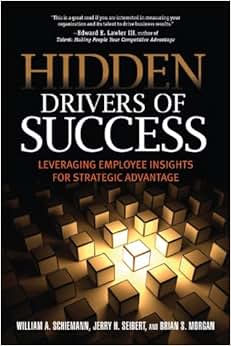
What Happens If You Fail a Funded Trader Challenge?
Imagine this: You’ve been grinding away at your trading skills, practicing on demo accounts, analyzing markets like a seasoned pro, and finally, you decide to take that leap — the funded trader challenge. You’re feeling confident, ready to show what you’ve got. But then, life throws a curveball, or maybe the markets don’t quite cooperate. Before you know it, you fail.
It’s a familiar story for many aspiring prop traders. The question that often lingers afterward is: What happens if you don’t pass? Is it game over, or just a bump in the road? Let’s unpack what it really means when you stumble at that critical hurdle, and what’s next for traders crossing into the world of funded accounts.
The Reality of Failing a Funded Trader Challenge
Failing a funded trader challenge isn’t the end of your trading journey; it’s more like a lesson learned on the path to mastery. These challenges are designed to test discipline, risk management, and consistency—traits that determine success in the real trading arena. When you miss the mark, it often boils down to a few common reasons: overtrading, risking too much on a single trade, or perhaps straying from your trading plan.
Most prop firms are straightforward about their policies. Typically, if you don’t meet the challenge’s profit target within the set rules, you don’t qualify for funding. Sometimes, it’s a matter of breaching daily loss limits or losing your maximum drawdown. When these happen, the system recognizes it as a failure, and you’re usually given the option to review what went wrong and, frequently, to try again.
What Can Be Learned from a Failure?
Failing a challenge doesn’t mean you’re destined to be a loser. It’s more like a wake-up call. Maybe your entries need refining, or perhaps your risk controls are too loose. It’s an opportunity to revisit your trading plan with fresh eyes and sharpen deficiencies. Some traders even keep a trading journal, analyzing each mistake, and turning setbacks into setups for a better comeback.
An example? Trader Jamie, who failed his first funded challenge, discovered he was overleveraging during volatile markets. After reviewing his trades, he adjusted his position sizing and adopted tighter stop-losses. On his second try, he passed effortlessly. That’s the power of seeing failure as a feedback loop rather than a final verdict.
The Path Forward After a Failed Challenge
Many traders wonder if trying again is worth it. The answer is usually yes. Most prop firms allow multiple attempts, often with some restrictions or a cooldown period. That flexibility is designed to give traders a chance to learn, adapt, and ultimately succeed. Building resilience is part of the process—think of it as training for the big leagues.
Additionally, use this time to diversify your trading style. Whether it’s forex, stocks, crypto, or commodities, expanding your asset universe can teach you new lessons on volatility, liquidity, and market sentiment. Remember, the goal isn’t just to pass a challenge but to develop skills that make you a consistently profitable trader in the real world.
Navigating the Evolving Landscape of Prop Trading
The prop trading scene is shifting rapidly, especially with the rise of decentralization and AI-driven finance. Decentralized finance (DeFi) platforms are challenging traditional models, offering more transparency and access to a global trading pool. However, this space comes with its own set of hurdles—security concerns, regulatory uncertainty, and technology risks.
Looking ahead, smart contracts and AI are set to redefine prop trading and investment strategies. Automated systems can execute trades with precision and speed beyond human capabilities, reducing emotions and biases. Still, trusting algorithms isn’t foolproof—market conditions can surprise even the smartest machines.
Cutting-Edge Trends and Future Prospects
The future of prop trading might look like a hybrid of human intuition and machine intelligence. We’re already seeing AI algorithms analyze vast amounts of data to identify trading opportunities in real time. As these technologies mature, easier access to diverse asset classes like options or commodities could democratize trading further.
Prop firms may also incorporate blockchain verification for transparency, offering traders more confidence in their performance metrics. And with the emergence of decentralized exchanges and smart contract trading, the barriers to entry are lowering, creating a more inclusive but complex environment.
Why Keep Going? Because Success Is Just a Challenge Away
Failing a funded trader challenge might feel discouraging, but it’s just one chapter in your trading story. Every setback is a setup for a comeback—more informed, more disciplined, more prepared. Remember, the markets are an unpredictable beast, and no single challenge defines your potential.
The resilience you build—along with a strategic approach to risk, continuous learning across assets, and embracing future technological trends—can turn a failed attempt into a stepping stone. For traders aiming to make it big, keep this in mind: “What happens if you fail? You get another shot to prove yourself—and that’s where real growth begins.”